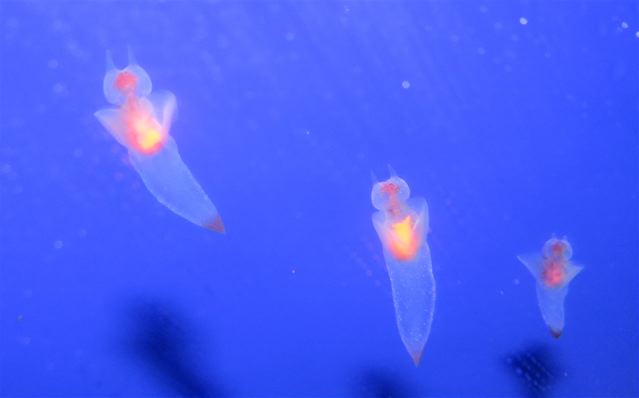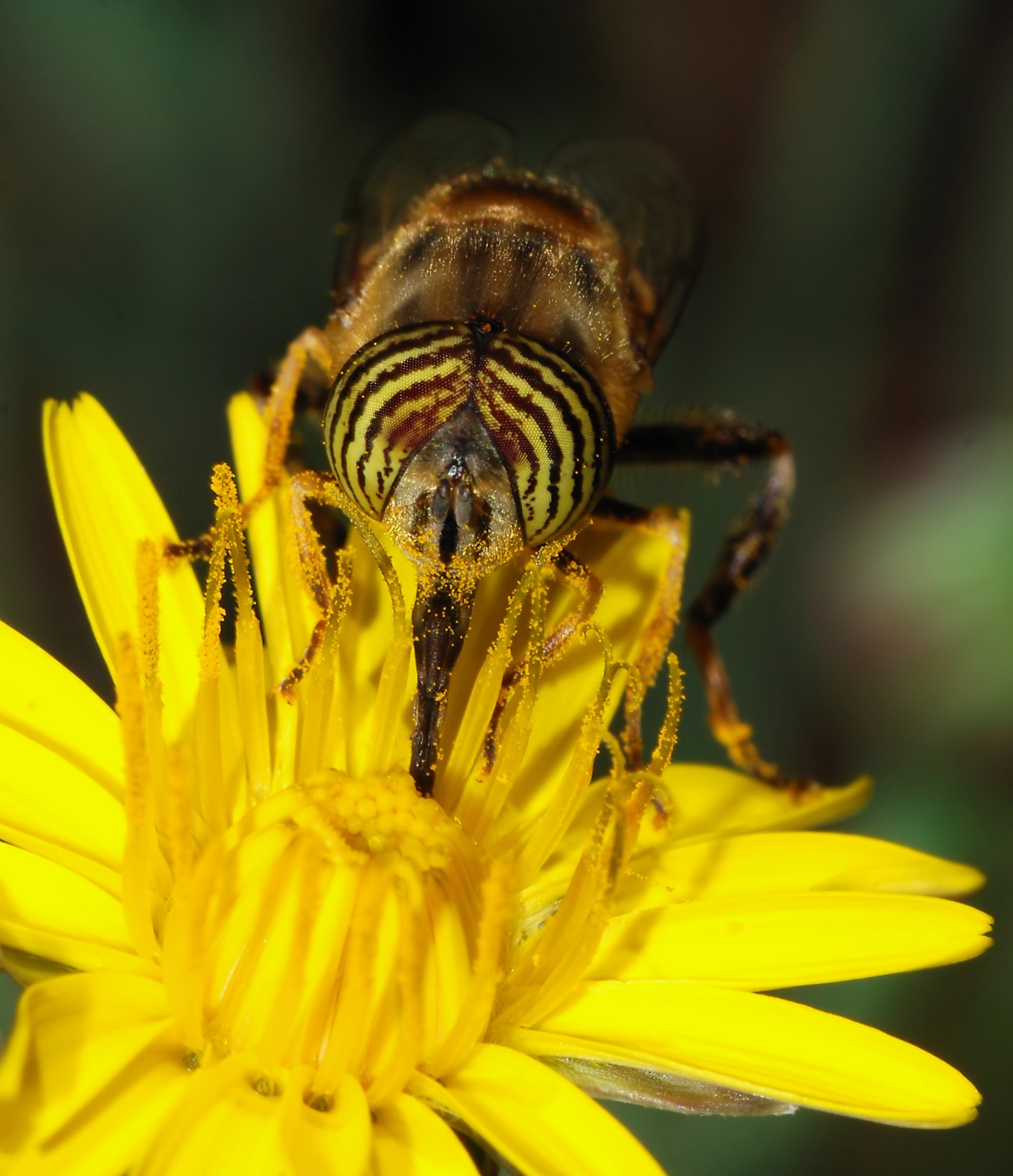|
Laginiopsidae
The Laginiopsidae are a taxonomic family of planktonic, marine opisthobranch gastropod mollusks in the suborder Gymnosomata, commonly called the ' sea angels'. These small pelagic snails lack shells (except in their early embryonic stage). Laginiopsidae is represented by a single species ('' Laginiopsis trilobata''), itself known from only a single specimen. This was one of several species described by the French malacologist Alice Pruvot-Fol. Like other Gymnosomata, the Laginiopsids are likely carnivorous, though nothing about the species' feeding habits and life history are recorded. The body of the single species is rounded with large swimming parapoda (wings). The various tentacles, suckers, jaws, and radula typical of other Gymnosomata are all absent in this family (the lack of a radula being particularly distinctive). The head has a long proboscis tipped with the mouth and three fleshy lobes. Genera and species Genus and species within the family Laginiopsidae include: * ... [...More Info...] [...Related Items...] OR: [Wikipedia] [Google] [Baidu] |
Gymnosomata
Sea angels (clade Gymnosomata) are a large group of small free-swimming sea slugs, classified into six separate families. They are pelagic opisthobranchs in the clade Gymnosomata within the larger mollusc clade Heterobranchia. Sea angels were previously considered to be pteropods. Sea angels are also sometimes known as "sea butterflies" but this is potentially misleading because the family Clionidae is just one of the families within this clade, and the term "sea butterfly" is also applied to the shelled Thecosomata. Recent molecular data suggest the Gymnosomata form a sister group to the Thecosomata (other planktonic, weakly or nonmineralized gastropods), but this long-standing hypothesis has also had some recent detractors. Distribution These organisms have a wide geographic range, from polar regions, under sea ice, to equatorial (tropic) seas. From spring to autumn, sea angels live at a depth of 200 m in the Sea of Okhotsk. In winter, they migrate to the coast of north ... [...More Info...] [...Related Items...] OR: [Wikipedia] [Google] [Baidu] |
Alice Pruvot-Fol
Alice Pruvot-Fol (4 August 1873 – 28 March 1972) was a French Opisthobranchia, opisthobranch malacologist. She was the author of many new species, mostly described on the basis of preserved animals. She described a new species (''Nembrotha rutilans'', Pruvot-Fol, 1931) on the basis of a painted illustration in a book by William Saville-Kent (1893) entitled ''The Great Barrier Reef of Australia''. She continued working and naming new species until late in her life. Even in 1962, when she was 89 years old, she named ''Phyllidia pulitzeri''. Species Some of the species described by her: *''Aldisa banyulensis'' Pruvot-Fol, 1951 *''Aplysiopsis formosa'' Pruvot-Fol *''Atagema gibba'' Pruvot-Fol *''Atagema rugosa'' Pruvot-Fol, 1951 *''Chelidonura africana'' Pruvot-Fol *''Chromodoris kuniei'' Pruvot-Fol, 1930 *''Cumanotus cuenoti'' Pruvot-Fol, 1948 *''Doriopsilla rarispinosa'' Pruvot-Fol, 1951 *''Elysia babai'' Pruvot-Fol, 1945 *''Elysia mercieri'' Pruvot-Fol, 1930 *''Facelina dubi ... [...More Info...] [...Related Items...] OR: [Wikipedia] [Google] [Baidu] |
Proboscis
A proboscis () is an elongated appendage from the head of an animal, either a vertebrate or an invertebrate. In invertebrates, the term usually refers to tubular arthropod mouthparts, mouthparts used for feeding and sucking. In vertebrates, a proboscis is an elongated nose or snout. Etymology First attested in English in 1609 from Latin , the latinisation (literature), latinisation of the Ancient Greek (), which comes from () 'forth, forward, before' + (), 'to feed, to nourish'. The plural as derived from the Greek is , but in English the plural form ''proboscises'' occurs frequently. Invertebrates The most common usage is to refer to the tubular feeding and sucking organ of certain invertebrates such as insects (e.g., Insect mouthparts#Proboscis, moths, butterflies, and mosquitoes), worms (including Acanthocephala, Nemertea, proboscis worms) and gastropod molluscs. Acanthocephala The Acanthocephala, the thorny-headed worms or spiny-headed worms, are characterized by the pr ... [...More Info...] [...Related Items...] OR: [Wikipedia] [Google] [Baidu] |
Azores
The Azores ( , , ; , ), officially the Autonomous Region of the Azores (), is one of the two autonomous regions of Portugal (along with Madeira). It is an archipelago composed of nine volcanic islands in the Macaronesia region of the North Atlantic Ocean, about west of Lisbon, about northwest of Morocco, about southeast of Newfoundland, Canada, and the same distance southwest of Cork, Ireland. Its main industries are agriculture, dairy farming, livestock, fishing, and tourism, which has become a major service activity in the region. In the 20th century and to some extent into the 21st, they have served as a waypoint for refueling aircraft flying between Europe and North America. The government of the Azores employs a large percentage of the population directly or indirectly in the service and tertiary sectors. The largest city of the Azores is Ponta Delgada. The culture, dialect, cuisine, and traditions of the Azorean islands vary considerably, because these remote island ... [...More Info...] [...Related Items...] OR: [Wikipedia] [Google] [Baidu] |
Radula
The radula (; : radulae or radulas) is an anatomical structure used by mollusks for feeding, sometimes compared to a tongue. It is a minutely toothed, chitinous ribbon, which is typically used for scraping or cutting food before the food enters the esophagus. The radula is unique to the mollusks, and is found in every class of mollusk except the bivalves, which instead use cilia, waving filaments that bring minute organisms to the mouth. Within the gastropods, the radula is used in feeding by both herbivorous and carnivorous snails and slugs. The arrangement of teeth ( denticles) on the radular ribbon varies considerably from one group to another. In most of the more ancient lineages of gastropods, the radula is used to graze, by scraping diatoms and other microscopic algae off rock surfaces and other substrates. Predatory marine snails such as the Naticidae use the radula plus an acidic secretion to bore through the shell of other mollusks. Other predatory marine snails, ... [...More Info...] [...Related Items...] OR: [Wikipedia] [Google] [Baidu] |
Genus
Genus (; : genera ) is a taxonomic rank above species and below family (taxonomy), family as used in the biological classification of extant taxon, living and fossil organisms as well as Virus classification#ICTV classification, viruses. In binomial nomenclature, the genus name forms the first part of the binomial species name for each species within the genus. :E.g. ''Panthera leo'' (lion) and ''Panthera onca'' (jaguar) are two species within the genus ''Panthera''. ''Panthera'' is a genus within the family Felidae. The composition of a genus is determined by taxonomy (biology), taxonomists. The standards for genus classification are not strictly codified, so different authorities often produce different classifications for genera. There are some general practices used, however, including the idea that a newly defined genus should fulfill these three criteria to be descriptively useful: # monophyly – all descendants of an ancestral taxon are grouped together (i.e. Phylogeneti ... [...More Info...] [...Related Items...] OR: [Wikipedia] [Google] [Baidu] |
Embryo
An embryo ( ) is the initial stage of development for a multicellular organism. In organisms that reproduce sexually, embryonic development is the part of the life cycle that begins just after fertilization of the female egg cell by the male sperm cell. The resulting fusion of these two cells produces a single-celled zygote that undergoes many cell divisions that produce cells known as blastomeres. The blastomeres (4-cell stage) are arranged as a solid ball that when reaching a certain size, called a morula, (16-cell stage) takes in fluid to create a cavity called a blastocoel. The structure is then termed a blastula, or a blastocyst in mammals. The mammalian blastocyst hatches before implantating into the endometrial lining of the womb. Once implanted the embryo will continue its development through the next stages of gastrulation, neurulation, and organogenesis. Gastrulation is the formation of the three germ layers that will form all of the different parts of t ... [...More Info...] [...Related Items...] OR: [Wikipedia] [Google] [Baidu] |





